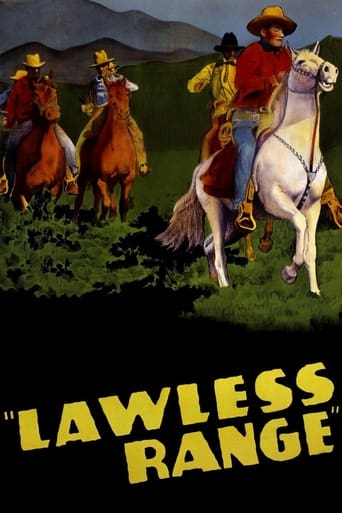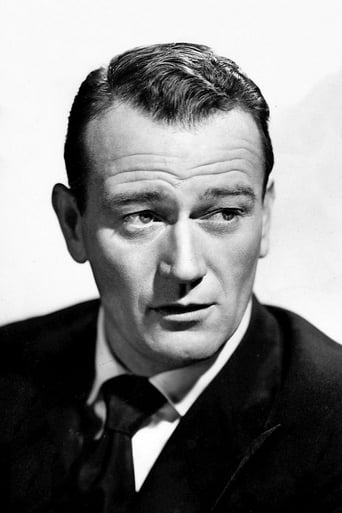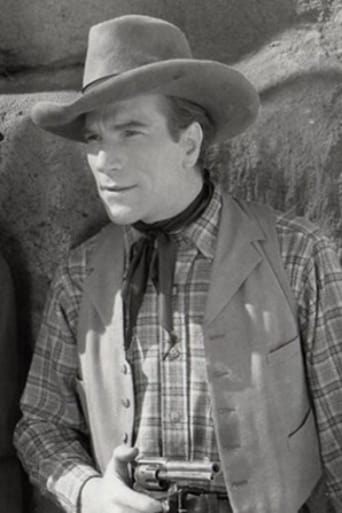

Lawless Range (1935)
John Middleton is investigating cattle rustling when he is captured and tossed into a cave with Emmett, a rancher who disappeared earlier. They help each other escape and learn that a local banker is trying to scare everyone away to grab up some secret gold mines.
Watch Trailer
Cast


Reviews
SYNOPSIS: A ruthless gang of outlaws seems determined to drive every rancher from the valley. Why? NOTES: Wayne's final Lone Star western - though the movie was not released as such. Monogram had become part of the new Republic Pictures organization. COMMENT: Here is Wayne signing off his Lone Star career with a snatch from the very same song with which he started off in Riders of Destiny. But in addition to the opening lines from "Blood a' Runnin' ", Wayne (obviously dubbed by extra-deep-voiced Smith Ballew) sings "On the Banks of the Sunny San Juan" right through. It's the longest musical interlude in any Wayne film. And as if that were not enough in the melody line, we are also treated to a chorus of cowpunchers standing around "That Old Dusty Road". Not that Lawless Range is short on action. That we have in plenty too. Lots of hard riding (in running inserts yet) and guns blazing ("Popping" would actually be a better word) plus a couple of impressive stunts including a high dive from a cliff (reprised from 1934's The Trail Beyond) and a jump from saddle to saddle. Unfortunately, a fair amount of the action footage is obviously stock - which makes for some confusing continuity. Still, unsophisticated fans will probably find the action sufficient and the pacing brisk enough to satisfy their needs - though few will fail to tumble to the identity of the big boss quite early on in the piece. Wayne as usual makes an engaging hero, Miss Manners/Mannors/Bromley is a plucky heroine (even when offering such lines as "I think his disappearance is part of some scheme") and it's good to see Wally Howe doing a Gabby Hayes impersonation as the kidnapped rancher. (Because they have all obviously copied from each other, just about every reference book tells us this role was played by Earl Dwire. Which is dead wrong. Mr Dwire plays the town storekeeper). A few picturesque location shots augment a very middling budget. Despite one or two of his irritating whip pans, director Bradbury generally if humbly hits home. His tracking shots with the lynch mob are particularly effective.
What's unusual here for the period is the construction of the villain's identity. Most 'big boss' bad guys were openly introduced on screen and given excessive, cartoonish proportions. Here, the boss is playing a double role, one blending within the group of good guys/victims, the other unseen and disguised until the climax. The effect is enforced by the lack of close-up face images.Aside from that, most of this is ordinary - Wayne as the irony-free hero who gets the girl. His voice is overdubbed by a professional baritone (a tenor would have been more convincing) in the obligatory musical segment, which pushed audio splicing technology to its limits. The gunfight scenes are nothing special. But there are two key action sequences, the first being a dive into a lake and the ensuing escape. Also, Wayne jumps from horseback to horseback to unmount the opposing rider - a scene that appears to be a rough template for Lucas' speeder chase in "Return of the Jedi".
"Lawless Range" has all the look and feel of John Wayne's Lone Star Westerns, but this one came from Republic Pictures during the same era. Adding to the tone of the film is the direction of Robert North Bradbury, who also made some of the Lone Star pictures; one of his trademarks is the quick flash forward technique used once in an early sequence.The formula pretty much remains the same too, this time Wayne's character takes on two identities. He's John Middleton posing as John Allen, working undercover for the local marshal (Jack Curtis) to expose a crooked bunch known as the Butch Martin gang. Interestingly, we never see Butch Martin, presumably it was a phony name to keep the real brains behind the gang under wraps. That would have been banker Carter (Frank McGlynn Jr.), who's trying to use late mortgage pressure to put the local ranchers under.You have to give credit to some of these early Westerns for the innovative stunt work done with men and horses alike. There were a few incredible mounted horse spills in the movie that make you wonder how they could have done that. There's also a great sequence where Wayne's character takes off after two villains on horseback, and catching up to the first, jumps on the henchman's horse knocking him off while continuing to chase the second. If you rewind and pay real close attention, you can distinguish the difference in body build between Wayne and stunt man Yakima Canutt as the exchange is made. Yak portrayed the nominal leader of the Martin gang, every now and then mentioning he had to check in with the 'chief'.I got a kick out of the scene where Middleton reports to the sheriff on the ambush prepared by the bad guys at Shotgun Pass. The marshal just happens to have a couple dozen men hanging around just ready to ride into action.As an added treat, John Wayne is shown singing a couple tunes in the course of the film, but the voice is obviously dubbed in, otherwise we're listening to a low, deep falsetto. In one instance he serenades the film's romantic interest, Ann Mason (Sheila Mannors). Here again we pick up a mainstay from Wayne's Lone Star Westerns, as the movie ends, he's seen getting cozy with his girl for the final frame.
An early b/w "two reeler" John Wayne western. It is a fun shoot 'em up, that is pure escapism. Don't look for a deep meaning. The stunt work in these early John Wayne/Yakima Canutt films is the equal of any, including those films being made today.




